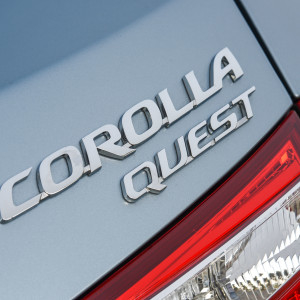
Drove the updated Toyota Corolla Quest last week, that comes with some welcome changes, notably the introduction of a 1.8L engine that promises more fuel efficiency. A total of three grades for six models in total have been added. The previous generation Quest and Corolla duo racked up a combined 136 880 unit sales (Quest contributing 63 966 units), making them SA’s most loved sedans.
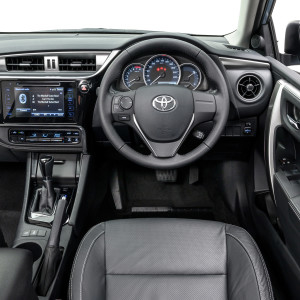
In a time of ever-increasing SUV adoption, the pair achieved a 71% share of the C-segment – maintaining momentum in the compact sedan segment. The Corolla, and also the Quest are popular with the Uber industry, which value it’s reliability, and value for money, but Toyota are aiming for a broader sales stroke here.
So, in essence, what is a Toyota Quest? It is a Corolla based on the 11th generation Toyota Corolla, thereby ensuring a value for money sedan with a plethora of features which offer comfort, space and style. With economies of scale, pricing is able to be kept in the ‘’ideal rev range’’.
The Changes.
So the development team went through a thorough development programme, which aimed to maintain the Quality, Reliability and Durability (QDR) level whilst implementing cost reduction – to the ultimate benefit of the customer. One of the major changes is a switch to a 1.8L engine, which promises better fuel efficiency

The front facia is also updated- The front bumper has been given an updated treatment (grade dependent), replacing the gunmetal accent trims previously employed. The standard and Prestige models utilise a continuous matte-black lower apron, whereas the Exclusive model boasts partial colour coding. The headlight trim too matches the radiator grille treatment (matte black vs colour), with the front fog lights now phased out. At the rear, the number plate garnish has been changed from chrome to body colour. The Quest is actually quite a handsome vehicle.
The standard model comes with cloth seats, whereas the Prestige model, one up, comes with a cloth/leather mix, and the range topping Exclusive is with leather seats.
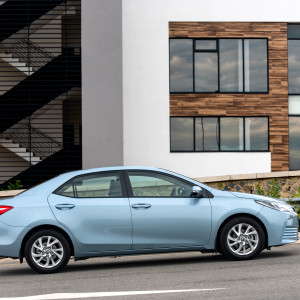
Toyota has tried to make the manufacture of the Quest, as cost efficient as possible, and to this end they looked to see how to make the production line more flowing, secondly component part commonization, and sourcing were re-looked at, in order to implement savings and thirdly, vehicle specification was tweaked to match customer requirements.
Colour pallette’s are shared with a few models, and with the commonization theme, localisation of the seat cross braces, floor silencers and seat bracketry, contribute to the value chain.
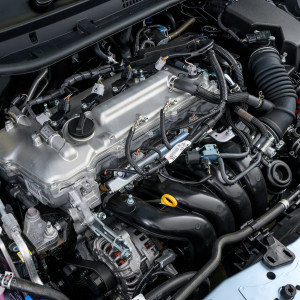
New Engine.
The 1.8-litre mill produces 103 kW and 173 Nm at 4000rpm. It certainly felt more powerful and responsive than the previous 1.6L mill, on the Reef, and in a torrential rain storm, on the day of testing, it proved it’s mettle. Fuel consumption is listed as 7.0 l/100km for manual models and 6.3 l/100km for models equipped with the CVT option – which is actually better than the outgoing 1.6-litre mill. I enjoyed the extra power, and will report on the perceived better fuel economy, when we test the Quest over 7-days.
Four-wheel disc brakes, with ventilated front and solid rear discs provide solid braking performance. Standard models ride on 15-inch steel wheels with 195-65-R15 tyres, whereas the mid and high-grade Quests roll on 16-inch alloy wheels shod with 205-55-R16 rubber. All models feature a full-size spare wheel.
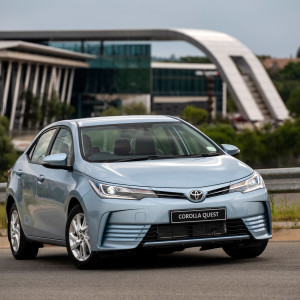
Three New Grades.
The new Quest has three new grades, and in order of value are Standard, Prestige & Exclusive.
The standard model is a no-frills variant, catering to the business user and focusses on value-for-money motoring. It makes use of a functional matte-black grille and bumper finishes, with 15-inch steel wheels and core specification features. The Prestige grade offers a blend of value and style, with colour-coded exterior treatment, 16-inch alloy wheels and added comfort ‘spec’. At the top of the range is the Exclusive model, which adds chrome exterior elements, a colour-coded front bumper treatment and a high-standard specification set.
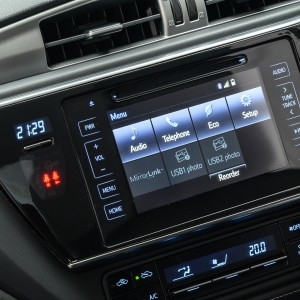
All three grades are offered in both 6-speed manual and CVT transmission guise – creating a matrix of 6 models. I preferred the manual version, as it gave you more puff, but the CVT is by no means bad, and does not have the characteristic hunting for gear irritation.

Safety.
All Quest models now come with Driver, Passenger and driver-knee airbags – while the Prestige and Exclusive models receive side airbags too.
Vehicle Stability Control (VSC) with Hill Assist Control (HAC), ABS, EBD, Isofix, LED daytime running lights and rear fog lights are standard across the board. During a particularly heavy storm that we drove through, the Quest felt quite planted, and the braking was good, under extreme circumstances.
Service plan and warranty.
All Corolla Quests are sold with a 3-services/45 000 km service plan with intervals pegged at 12 months/15 000 km. A 3-year/100 000 km warranty is included.
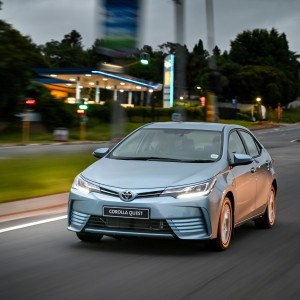
Model Line-up and Pricing( In dealerships March 2020)
| 1.8 Quest | R249 900 |
| 1.8 Quest CVT | R270 400 |
| 1.8 Quest Prestige | R286 500 |
| 1.8 Quest Prestige CVT | R296 800 |
| 1.8 Quest Exclusive | R307 400 |
| 1.8 Quest Exclusive CVT | R317 700 |

The Quest should continue to find buyers, albeit in a SUV frenzy of models being launched. As long as there is value to be had, with the surfeit of media and tech features available, and the aggressive pricing, this Quest will refuse to be retired to the model cemetery.
